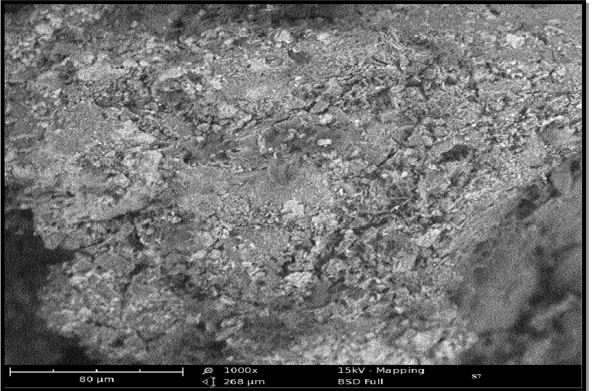Characterization and Evaluation of Human Health Risk of Heavy Metals in Tin Mine Tailings in Selected Area of Plateau State, Nigeria
Keywords:
Tin mine tailings, Heavy metals, Hazard Index, Carcinogenic Risk and Hazard QuotientAbstract
Tin mining tailings are unprocessed waste materials that overlie an ore which are displaced during mining activities. This research work is aimed at characterizing and evaluating the human health risk of heavy metals in tin mine tailings in Zabot (S3) and Tafan (S4) districts in Barkin Ladi Local Government Area of Plateau State, Nigeria. The samples were characterized using EDX-XRF and SEM. The concentrations of seven heavy metals (Pb, Cr, As, Ni, Cd, Cu and Zn) were determined in S3 and S4. The results showed that Cr, Ni, Cd, Cu and Zn were within the USEPA permissible limits, except for Pb and As with range of (270-300) mg/kg and (40-70) mg/kg respectively for both mining and control sites of S3 and S4. The SEM results revealed small particles size with fine porous structure, and rough areas with varying sizes and pores distributed over the surface for S3 and S4 respectively. Results of the risk assessment showed that the hazard quotient HQ and HI values were greater than 1 indicating high risk. The Carcinogenic and non-carcinogenic risks associated with Pb, Zn, Cd, Cr, Ni and As were evaluated for S3 and S4 for the three exposure pathway and it was found that the mining sites pose more risk than the control and the children were more exposed than the adults. The carcinogenicity of these samples were due to the high hazard quotient for ingestion and dermal exposure pathway. The R total results for As, Cr, Pb and Ni for mining site S3 were found to be (1.39 × 102 , 2.02 × 10-7 , 3.30 × 103 and 8.17 × 10-8 ), and control site (3.42 × 103 , 2.64 × 10-5 , 38.30 × 101 , 6.90 × 10-8 ) for As, Cr, Pb and Ni respectively. From the R total results As and Pb were more than the acceptable threshold, while Cr and Ni were below the threshold of 1 × 10-4 . For the mining site S4, the R total were found to be (5.70 × 102 , 1.82 × 10-7 , 3.63 × 104 and 9.64 × 10-9 ),
and the control (1.16 × 103 , 1.71 × 10-7 , 31.1 × 102 and 1.51 × 10-8 ) for As, Cr, Pb and Ni respectively. From the results of the mining and control sites, As and Pb R total were higher than the acceptable threshold, while Cr and Ni were below the threshold of 1 × 10-4 .

Published
How to Cite
Issue
Section
Copyright (c) 2021 Journal of the Nigerian Society of Physical Sciences

This work is licensed under a Creative Commons Attribution 4.0 International License.







